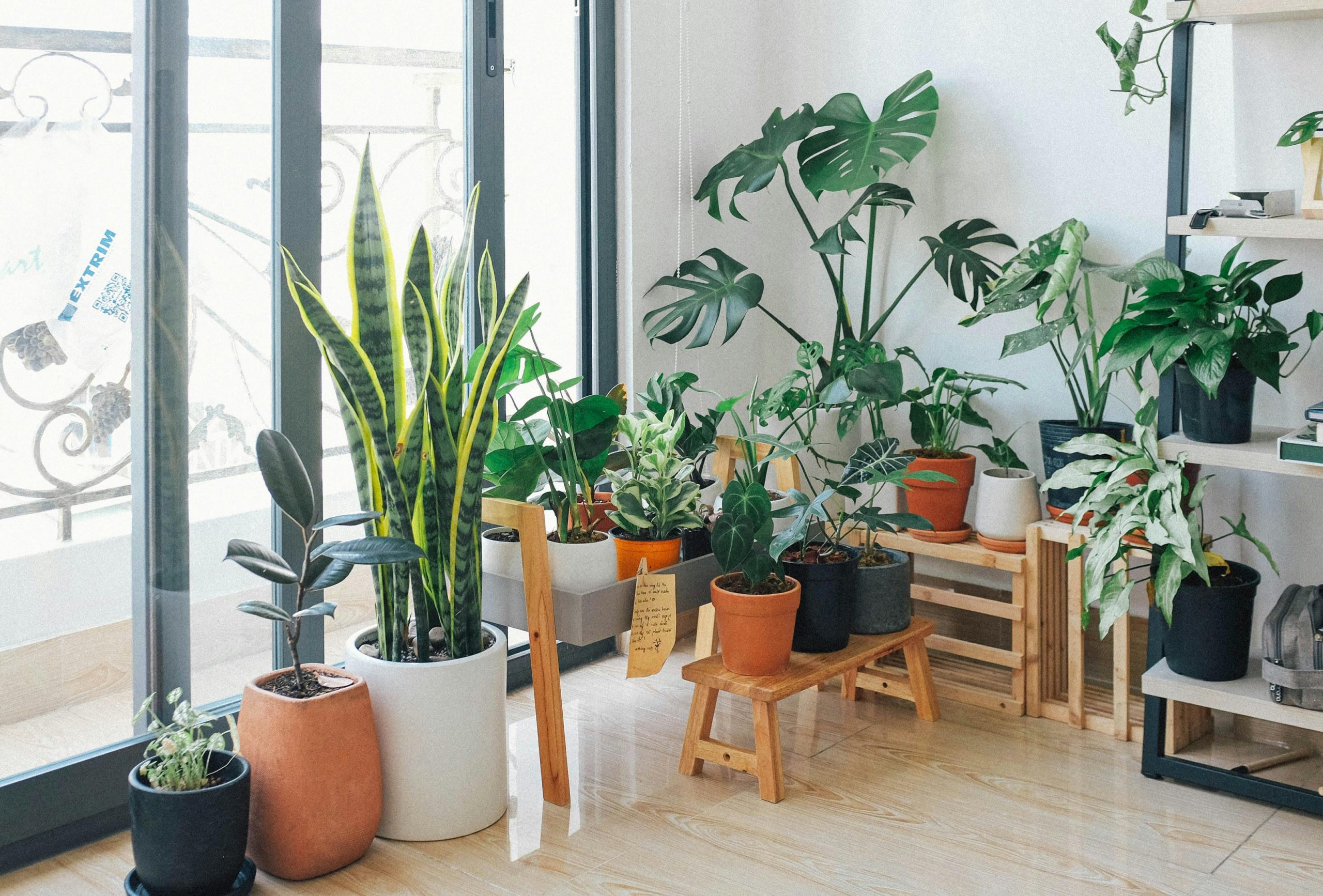Houseplants not only add aesthetic value to your living space but also improve air quality by filtering out toxins. NASA’s Clean Air Study identified several plants that are particularly effective at purifying the air. Here’s a list of the best plants to consider for your home, based on their air-cleaning abilities and ease of care.
1. Spider Plant (Chlorophytum comosum)
Spider plants are among the most popular and easiest to care for houseplants. They are known for their ability to remove formaldehyde, xylene, and toluene from the air. Their long, arching leaves and small white flowers add a touch of elegance to any room. They thrive in indirect sunlight and require minimal watering.
2. Snake Plant (Sansevieria trifasciata)
Also known as mother-in-law’s tongue, the snake plant is a hardy option that can survive in low light and with infrequent watering. This plant is excellent at filtering out formaldehyde, benzene, xylene, and trichloroethylene. Its upright, sword-like leaves make a bold statement in any decor.
3. Peace Lily (Spathiphyllum)
Peace lilies are not only beautiful with their glossy leaves and white blooms, but they are also powerful air purifiers. They can remove pollutants such as ammonia, formaldehyde, benzene, and trichloroethylene. Peace lilies prefer shady areas and need to be kept moist, making them ideal for bathrooms or low-light rooms.
4. Aloe Vera
Aloe vera is well-known for its medicinal properties, particularly in treating skin conditions. However, it is also effective at purifying the air by removing formaldehyde and benzene. Aloe vera plants need plenty of sunlight and minimal watering, making them perfect for sunny windowsills.
5. Boston Fern (Nephrolepis exaltata)
Boston ferns are lush, green, and have a classic look that complements any home decor. They are particularly good at removing formaldehyde and xylene from the air. These ferns thrive in high humidity and indirect light, making them suitable for bathrooms or kitchens.
6. Bamboo Palm (Chamaedorea seifrizii)
Bamboo palms, also known as reed palms, are effective at removing formaldehyde, benzene, and trichloroethylene. They grow best in bright, indirect light and need regular watering to keep the soil moist. Their tall, feathery fronds create a tropical feel in any room.
7. English Ivy (Hedera helix)
English ivy is a versatile plant that can be grown in hanging baskets or as a climbing vine. It is known for its ability to remove formaldehyde, benzene, and xylene from the air. English ivy prefers cool, moist conditions and indirect sunlight.
8. Rubber Plant (Ficus elastica)
Rubber plants are not only striking with their large, glossy leaves but also highly efficient at removing toxins such as formaldehyde from the air. They thrive in bright, indirect light and require moderate watering.
9. Dracaena
There are several varieties of Dracaena, all known for their air-purifying qualities. They can remove pollutants like formaldehyde, benzene, trichloroethylene, and xylene. Dracaenas prefer indirect sunlight and should be watered when the topsoil feels dry.
10. Golden Pothos (Epipremnum aureum)
Golden pothos, also known as devil’s ivy, is a resilient plant that can thrive in a variety of conditions, including low light. It is effective at removing formaldehyde, xylene, and benzene from the air. Its trailing vines and heart-shaped leaves make it a popular choice for hanging baskets or shelves.
Tips for Maximizing Air Purification
To get the most out of your air-purifying plants, consider the following tips:
- Placement: Distribute plants throughout your home, especially in areas where you spend the most time.
- Quantity: NASA recommends having at least one plant per 100 square feet of space.
- Care: Regularly dust the leaves to ensure they can efficiently filter air and follow proper watering and lighting guidelines for each plant type.
By incorporating these air-purifying plants into your home, you can create a healthier indoor environment while also enjoying the natural beauty they bring. Happy planting!

 Facebook
Facebook
 X
X
 Pinterest
Pinterest
 Copy Link
Copy Link



